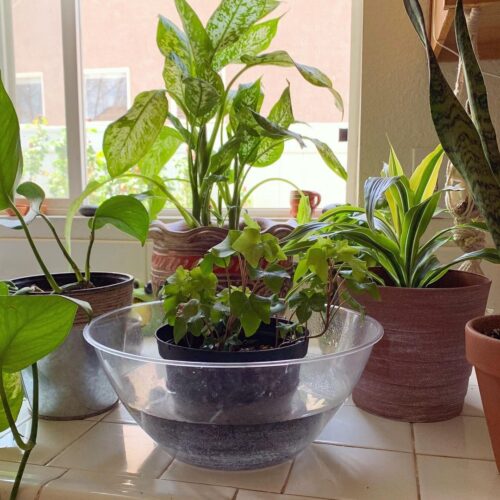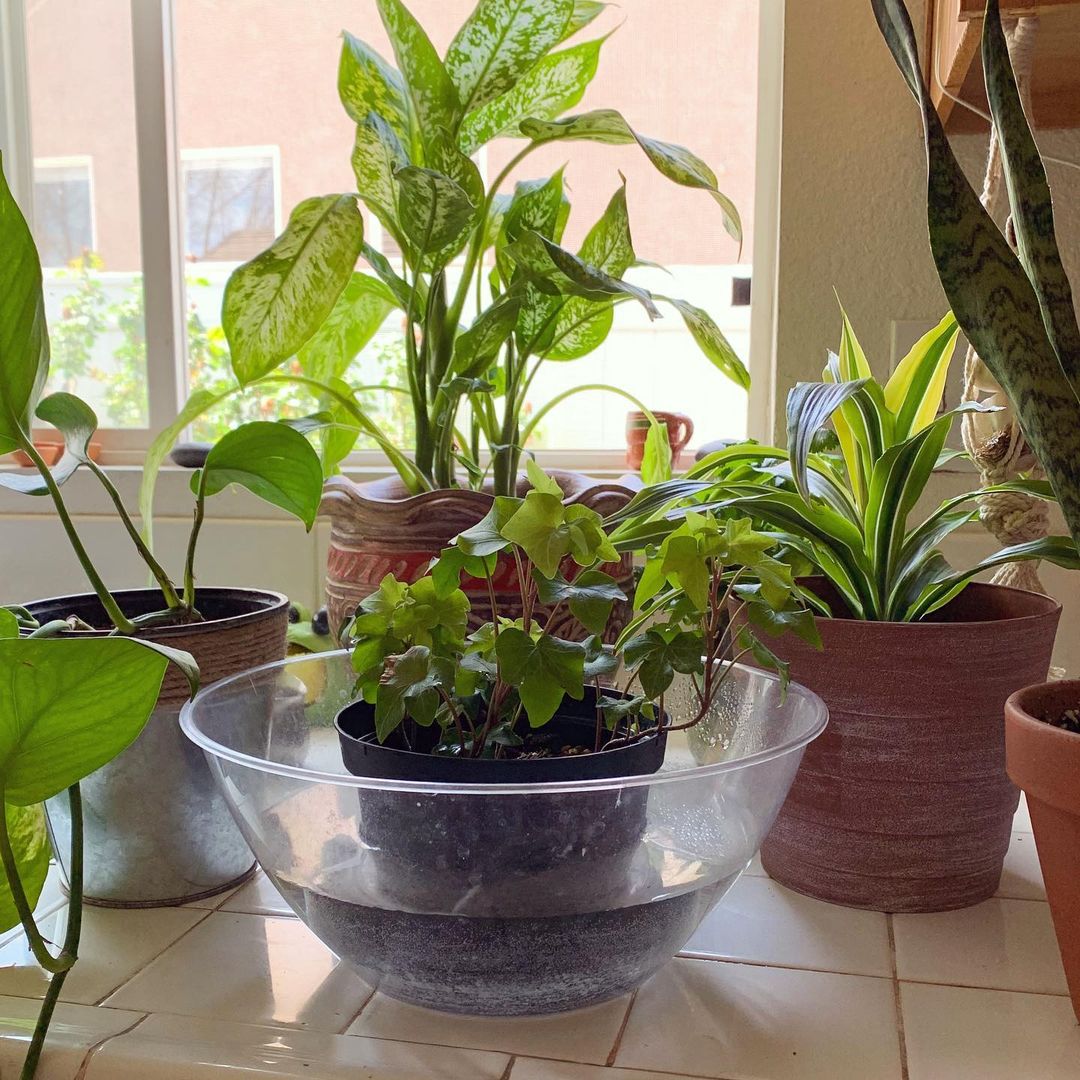Read about the benefits of bottom watering your plants and how you can do it in your homes for better plant growth.
Bottom watering is a process that comprises pouring water into a big container, tub, or sinks with a few inches of water in it that fits pots and allowing the plants to sit there for around 5-10 minutes, according to the drainage holes and size of the plant. The drainage holes in the pot enable the water to absorb into the soil without over soaking it. When the soil absorbs all the moisture, take it out from the tub or container.
The key rule of using bottom watering is that the pot must have at least 1-2 drainage holes.
Difference between Bottom Watering and Top Watering
In the case of top watering, sometimes soil cannot get enough moisture, and if you let the planter sit in the drainage plate, it may suffer root rot as the plant has already captured all the water it requires.
Conversely, bottom watering supplies the water in the correct quantity that does not over-saturate and controls over-watering. This method also keeps the humidity at the bottom on point and makes the root system more restorative. You can follow the bottom watering technique in cases where plants dislike wet leaves as they cause leaf drops or yellow patches.
How to Bottom Water Your Plants

- Fill the tub or sink with sufficient water that will reach the bottom of the soil in your pot. If you have placed drainage rocks or pebbles at the bottom of the pot, then keep the water levels higher, which easily reaches the soil.
- Set the potted plants in a straight position in the tub or container filled with water. Ensure that the pot won’t float or dip in the tub.
- Allow the plants to sit in the tub for at least 10 minutes before you take them out.
- After the session, you will notice that the soil is moist; note that sometimes the topsoil does not get wet, and that’s fine.
- Drain the water from the tub and allow the plants to hang for a few minutes.
Note: Different types of soil have diverse levels of water absorption capacity. For example, cactus soil consists of perlite and rock, and it cannot soak water compared to bark and sphagnum moss.
Benefits of Bottom Watering
- This process is great for plants that produce velvety or sensitive foliage, such as peace lily, African violet, or calathea. Water can harm their leaves.
- It assists the plant in soaking the correct amount of moisture without overwatering.
- Bottom watering encourages deep root growth, which helps the plant in the future.
Point to Consider
1. Do not overcrowd the plants as it can be harmful to foliage and stems. Also, stay careful for delicate plants as they can be damaged easily.
2. Bottom watering is ideal for small to medium-sized plants that can be moved easily.
3. While bottom watering, you can mix plant food in the water and ensure it won’t leave marks on the tub or sink.
4. Keep an eye on the clock when your plants are attending the bottom watering session as sitting in the water for long can be harmful to the plant’s health in a similar way to overwatering.



